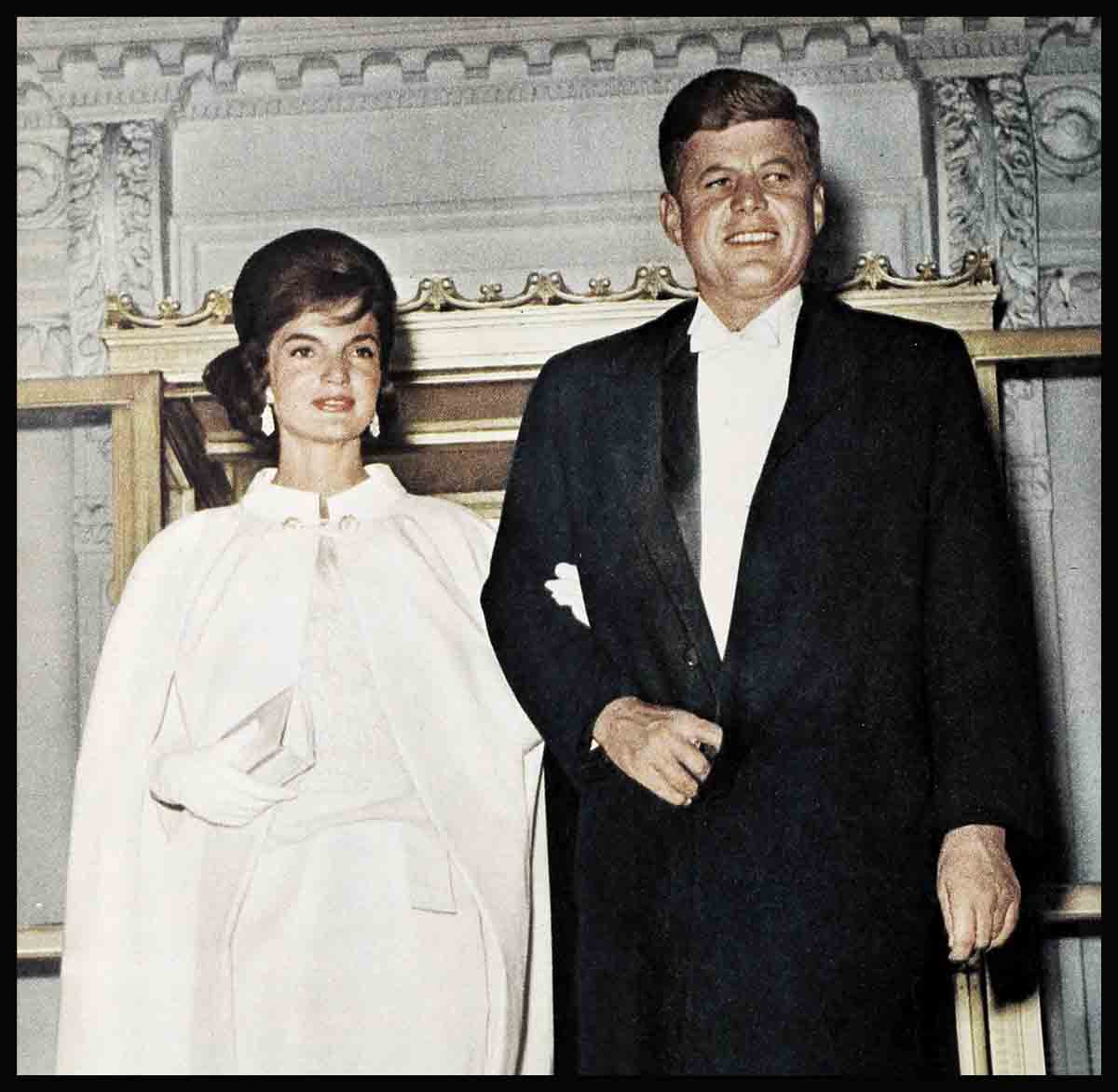
Marriage & Taste—Mr. and Mrs. Kennedy
The hand of fame touches people in different ways. It liberates some, imprisons others. Some react by becoming free of pettiness, selfishness and deceit. Others react by becoming prisoners of self-love, victims of irresponsibility. There are no better examples of this contrast than President and Mrs. Kennedy and Elizabeth Taylor and Richard Burton, the two most talked-about couples in the world today. Whatever they do makes headlines—and the headlines they make are as different as the lives each couple leads.
The Kennedys live for each other, not for the ecstasy of being “in love.” Still, their love glows—brightly, quietly—a light of inspiration.
Elizabeth Taylor and Richard Burton live for Elizabeth Taylor and Richard Burton. Theirs is the fire of passion, living for its own blaze and burning those who happen to come too near.
How does one couple—why does one couple—let the hand of fame lead them to service and taste, while the other lets it take them into shame and waste? The answer is the subject of an unusual four-page Photoplay report. These timely articles, written by world-famous authors Fannie Hurst and Hedda Hopper, are must reading for every intelligent person.
PART II
Youth has come to live at the White House for a minimum period of four years, with option of renewal from us, the voters and the landlords.
Probably nowhere in the world could the images of Mr. and Mrs. Kennedy, presently of 1600 Pennsylvania Avenue, Washington, D.C., U.S.A., be more appreciated than in youth-worshipping America—which spends annual billions of dollars fortifying itself against graying hair, crow’s-feet, middle-age spread. And more billions on beauty parlors, health farms, diet foods, plastic surgery and reducing pills. Even the President himself, cognizant of the appraising eyes of the nation, admits to going on a strict diet for several days before each of his televised press interviews.
Regardless of parties or politics, Mrs. Kennedy, born of what is undemocratically known as the “privileged class,” appears—to the general public, at least—to have everything. Although in her early thirties, she might be almost any one of the teenagers who emulate her. Walk along a city street and you will find yourself passing a stream of replicas of Jacqueline Kennedy. Some of them are fairly successful imitations, more of them are not. The majority border on the grotesque.
And still they come! Ladies in pill-box hats. Ladies in over-size coiffeurs on exactly the wrong heads. Tall girls in further elongating shifts. Reproductions of Jacqueline Kennedy to the right of you, to the left of you.
Neither is it surprising to find yourself turning to look after a tall, wide-shouldered young man striding along. Could that be the President? It could, so far as resemblance is concerned. Never before have we had a President and First Lady reminiscent of a quarter-back and his senior-prom date.
To be sure, practically no First Lady of the land has ever escaped critical scrutiny of her clothes, her decorum, her decor. Dolly Madison, close runner-up to Mrs. Kennedy in charm, was under fire for over-dressing; Mrs. Eisenhower for dressing too coyly for her age; Mrs. Roosevelt for apparent indifference to her clothes. Her daughter Anna once fondly remarked of her parent: “There is a hopeless discrepancy between my mother and her clothes.” By no stretch of the imagination would Mrs. Roosevelt, with all her inner beauty, have qualified for one of those “best-dressed” lists.
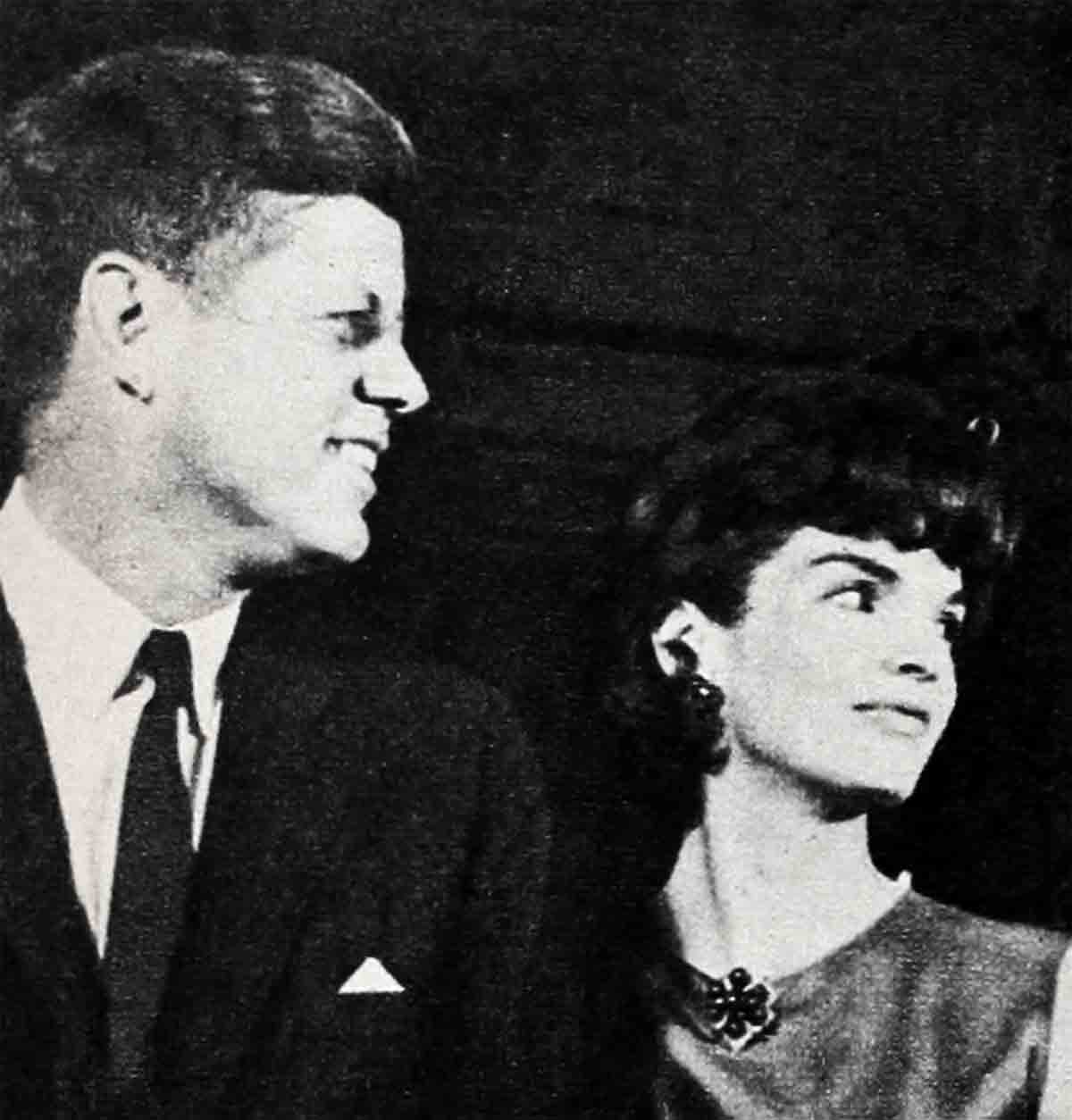
On Jackie it looks good!
It is to be prayerfully hoped that the engaging pictures of Mrs. Kennedy in slacks, or water-skiing in a bathing suit, will not spark her female admirers to emulate her. We already have the sorry spectacle of the poor dears who cannot see themselves as others see them, presenting their waddling posteriors and spare-tires of spilling flesh to the tortured public.
Mrs. Kennedy in a bathing suit or slacks may be a slim delight, but ladies, let your conscience and your bathroom scales be your guide.
Since the endearing lunacy of the ladies apparently knows no limit, the rush may next be to the plastic surgeons for the tilted “Jackie nose.”
Mrs. Kennedy’s “clothes-horse” importance, however, has been magnified out of all proportion. Well-bred, gently reared, nicely educated, she is further endowed with what is known as “style” and a flair for simplicity—the expensive kind—and is directly responsible for the understated elegance of today’s high fashions.
But the sobriquet “clothes-horse” implies certain limitations which are not hers. In addition to her chic, her intellectual alertness has been a shot in the arm to the cocktail-partying, dinner-partying, social-merry-go-’round whirl of diplomatic Washington. “Clothes-horse” does not explain the whole woman or reveal the “little woman” aspect of the First Lady. Her over-all preference, by her own statement, is a relaxed home atmosphere, whether in the White House, Cape Cod or wherever, for her husband, children and herself.
The unsavory Taylor-Burton headlines, the shabby stories of shabby lives, of multiple marriages, infidelities, divorces, broken homes, displaced children, swell newspaper circulation. Glamour boys who have crashed into sensationalism by way of splintering standards of behavior. Lotharios of the entertainment world who travel with entourages of young men. These are the pinup idols of girls and boys in tight pants and dirty shoes. The Goddess of Service vies with the age of kicks.
But America must be sound at heart, or the high standards of dignity and taste of the family life of the youngish Kennedys would not evoke the warm reaction of the entire nation as it does.
Mrs. Zilch of Vandalia. who buys her dresses “off the racks” and, with her hair in curlers, trundles her cart to the supermarket, may not be sure whether Laos is a nation or an insect. But she is drawn toward her First Lady with a “sisters under their skin” feeling when Mrs. Kennedy, in the glittering midst of a journey around the world, observes pensively that it would be an even more wonderful experience if her husband had been along. “I do not want to travel without him.”
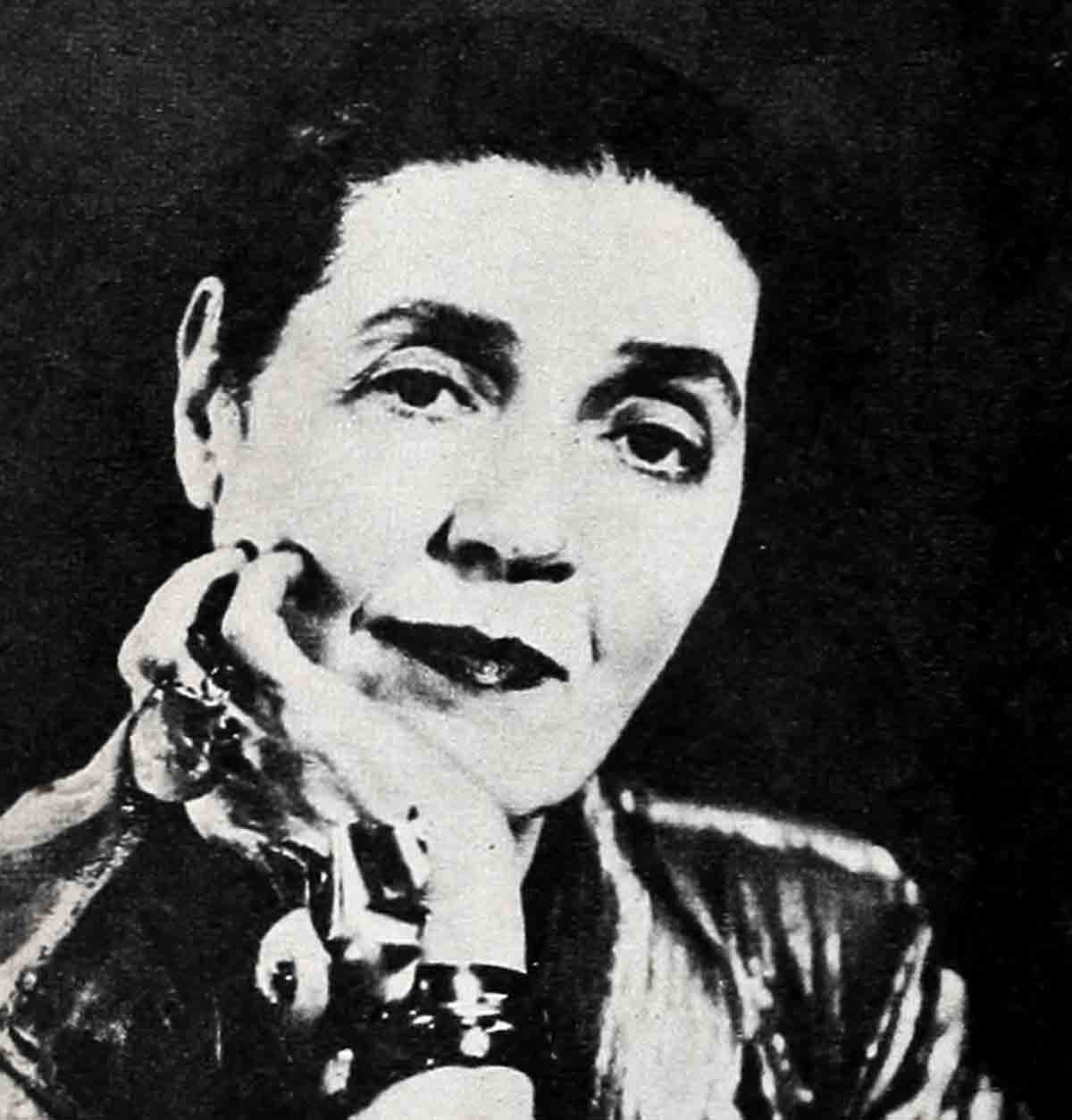
“Sophisticated togetherness”
The alacrity with which the nation took unto its bosom the synthetic word “togetherness” is evidence of its welcome to the resuscitation of family life in this harassed period. At heart. America loves the wholesome, although Mrs. Kennedy’s environment has never been what you might call the grass-roots-meat-and-potatoes kind.
Mr. and Mrs. Kennedy, worldly, sophisticated. manage to convey that cozy image of family togetherness. To quote one expert reaction: “What makes the Kennedys unique is that they are perfect examples of what psychologists call inner directed people with a sense of spiritual values.”
Early in the administration, the First Lady took over the housekeeping task, or rather labor of love, renovating the 1600 Pennsylvania Avenue mansion with the same housewifely impulses of our Mrs. Zilch, as she plunges into her problems of house cleaning, drapes, color schemes, paint jobs. Mrs. Kennedy, however, works on the cultural level, banishing obsolete furniture, restoring, researching, always aiming at sharpening the historic significance of this home of thirty-three successive Presidents.
To be sure, all along the line, First Ladies have made changes in the White House suited to their individual taste, no little of that taste destined to be relegated to the basement by the next residents. But Mrs. Kennedy, far more ambitious, has set about attempting to tell the White House story in terms of its period, furnishing and art. The White House is Americana. The mores of the nation are in its timbers. It is a house to revere and cherish. Mrs. Kennedy does both.
Down she went into the dusty recesses of basements, seeking, unearthing, restoring relics that had been banished. Flatware from the Monroe era; mouldering presidential portraits; a footstool with a Theodore Roosevelt storage tag. In addition, in response to her clarion appeal across the nation, rare period furniture, objets d’art, generous financial gifts from patriotic citizens have aided and abetted restoration.
One of television’s finest hours was the Jacqueline Kennedy-Charles Collingwood tour of the refurbished White House, the First Lady revealing in-depth knowledge of the historical procession of thirty-three families along the transmission belt of time.
Resultantly, the word “culture” spread like wildfire. Culture with a capital “C.” The first literary boom under the aegis of the White House is on. Robert Frost—whose poetry is salt of his native soil, and always will be, though he is now gone—was invited to participate in the inaugural ceremonies. Authors, musicians, artists, opera and ballet stars are invited to White House social functions without necessarily being expected to perform for their supper. Belafonte, Steinbeck. Malraux, Bernstein, Casals, Hellman, Wilder, and many more. Plans for a national culture-center are set in motion.
Thus the combination of a politician, scholar, best-selling-author, Pulitzer-prizewinning President, and a lady with a lively mind, succeeded in quickly stimulating a cultural climate.
On the other hand, the nation enjoys a pleasant sense of identity with its President when it learns that he cut his finger while slicing bread for an afternoon snack. But the fact that he can quote from Trollope to Swift to Goethe to Tolstoy to Wilson has done him no disservice. President Wilson’s erudition may have been more profound, but he wore it like a dark cloak that isolated him. The Culture (capital “C,” please) which today permeates the White House is sunny, a happy circumstance in a period when affairs of state have never been more somber.
Despite its shy mistress, the White House these days is something of an Open House. Max Lerner, returning from a lengthy sojourn abroad, observed that among the many home privileges he especially appreciates, following his European months, is his democratic right to openly discuss what is wrong with the administration and to look in on the private lives of Presidential candidates and Presidents elected.
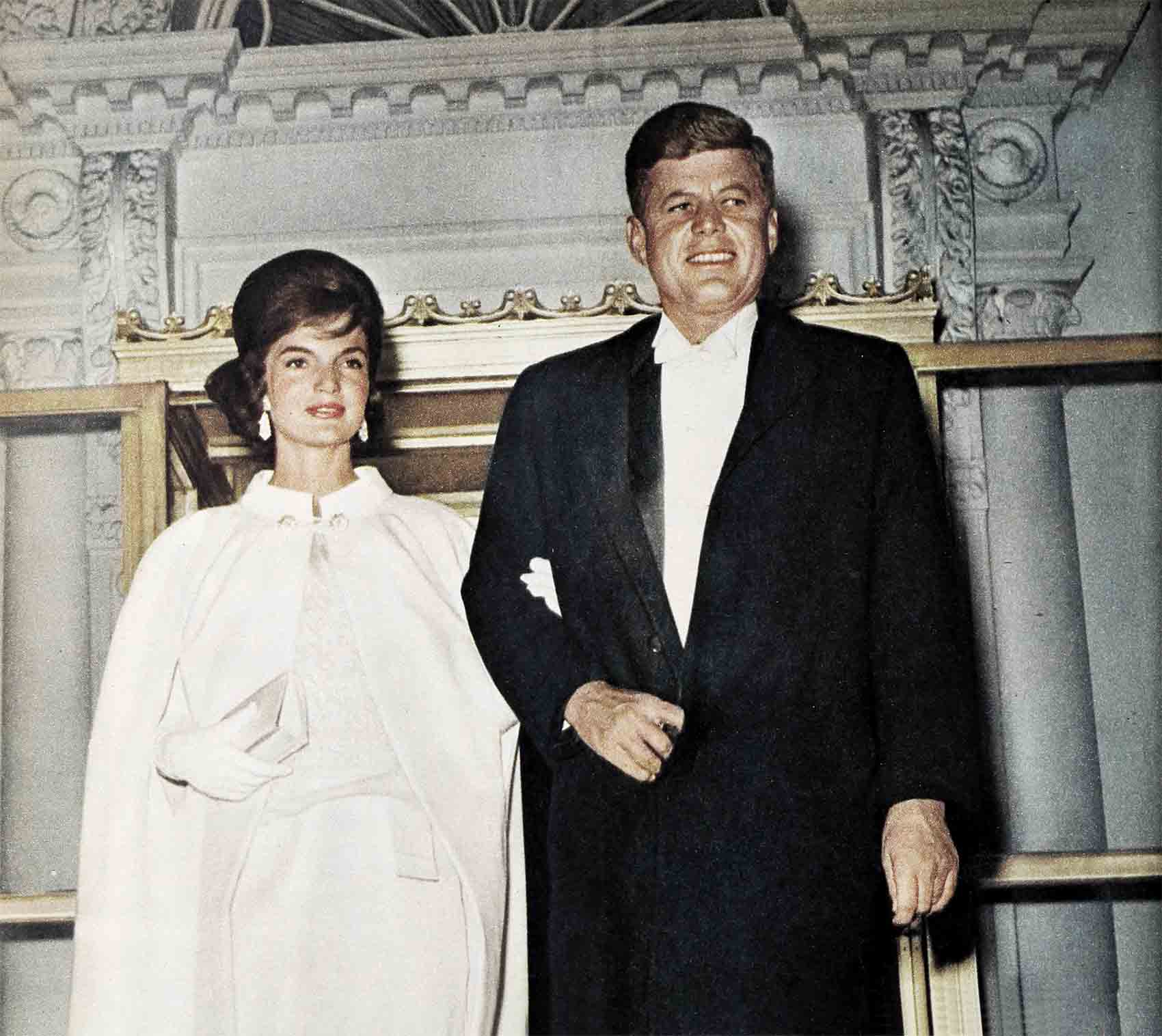
Behind glass walls
And look into their lives we do! Centuries ago, we had the Ice Age. Today we are living in the midst of the Glass Age. Glass, in our highly urbanized civilization, has become a major building material. In vertical-city America, sky-scrapers rise to glacial glassy heights. But for that matter, the White House might have been made of glass throughout its history for all the privacy it has assured any of its first families.
Mrs. Kennedy, squirming a bit, describes it as “life in a fish bowl.”
It is true, and to the good, that the old squeamishness concerning a pregnant woman appearing in public—as if there were something shameful about procreation—belongs to yesteryear. “Expectant” ladies have long since abandoned their one-time seclusion to such a degree that they often seem to proclaim, by way of silhouette, their good tidings. The old squeamishness may be gone, but to a woman of Mrs. Kennedy’s reticence, the “must” of telling all to the world, merging her private life with her public life, is in all probability contrary to her preferences. One can visualize the discussions with political advisers which may have taken place before the announcement of the impending birth was finally made in her fifth month of pregnancy. Within the months that followed, an “heir apparent” became glowingly apparent. America went through the remainder of the pregnancy with cheerful expectation—and sorrowed with the Kennedys over their ultimate loss.
Thus, not only their mother, but the Kennedy children share the problems, pitfalls and advantages of the fishbowl they call home. As admired a mother as she may be, the fact remains that Mrs. Kennedy belongs to the privileged minority. The problems of obtaining a baby-sitter, while she and her “hubby” have a night out, are not hers nor have they ever been. She adores her children but is in no sense a “typical” mother. She is free to travel, leaving them in the hands of capable nurses. She can vacation without them and does. But in spite of her whirling activities outside the periphery of her husband’s political world, she nevertheless manages to put the President, her children and her personal life first. During her comparatively brief occupancy of the White House, she has etched her personality brightly into the national mind as a knowhow hostess and home-maker—even in a glass house.
Whether Mrs. Kennedy has helped establish the trend, or the trend has conditioned her, the home is once more becoming the nucleus of the family, after years of disintegration. With television the modern fireside around which today’s children gather, it is safe to assume that Mrs. Kennedy determines the degree of Caroline’s and John-John’s exposure to it. By her own avowal, she is not attempting to rear her youngsters “by the book.” In the present-day permissive climate, she dares to admit, that she remains that unmentionable—of all things—a disciplinarian.
A man’s measure—his family
The entire Kennedy “clan,” as they do not like to be termed, is an amazing unit of solidarity. As the First Lady’s father-in-law Ambassador Kennedy observes, “We had togetherness before the word was popular. The measure of a man is not the money he has made but the kind of family he has reared.” He and his wife have not done so badly.
The First Lady, also from a champagne-and-violets background, has good reason to strive to emulate her in-laws in rearing her own children. So. for that matter, has the President himself. Brought up as he was in the soporific lap of luxury, he might easily have become a playboy instead of a world leader. Indeed, at the moment, he is in the throes of a devastating love affair with Caroline. That he is inclined to “show her off” is as openly evident as his paternal pride.
Mrs. Kennedy’s reasons for not participating in politics are frequently queried. They seem to be quite simply a matter of preference. Her sitting room in the White House overlooks the rose gardens and is directly in view of the windows of the office where her husband, as President, must make tremendous decisions. But she rarely ventures into the climate of affairs-of-state, apparently preferring to watch the children at play in the rose garden. Just as in windows the country over, millions of mothers are watching their Carolines and John-Johns at play. Sisters under the skin—from Washington. D.C., to Seattle. Washington, from Cottage Corner, Vermont, to Fancy Prairie, Illinois. Few of them wear thousand dollar ball gowns, or have ever dined with kings. But most of them share Mrs. Kennedy’s trials and joys as a mother.
It is providential circumstance that the President and his family present this wholesome picture of our national behavior. It demands an inner strength, even when the mise-en-scene is 1600 Pennsylvania Avenue, to meet the problems and pitfalls of fame. To live in it. To love in it. To thrive in it!
Happily, Mr. and Mrs. John F. Kennedy have that strength.
Mrs. Kennedy does not think of herself in terms of the higher wisdom. Despite her modernity, she seems to still regard her position as marginal to a man’s world, a way of thought that continues to have great appeal both to men and a surprising proportion of women.
Following a small White House party, she observed: “We had Franklin Roosevelt, Jr. and the British Ambassador to dinner. It was fascinating to hear those three men talk. And the women listen. On another occasion, following the Casals concert, the Leonard Bernsteins were here, and that was fascinating. I think of the times we are living through, both of us young and with health and wonderful children—and to live through all this . . .”
Thus we have the paradox of a starry-eyed, Sorbonne-educated, horseback-riding, culture-conscious and water-skiing wife of a President.
Her philosophy would indicate that she prefers to think of herself as wife and mother, rather than First Lady of the Land. Both appellations may well be worn proudly!
THE END
—BY FANNIE HURST
It is a quote. PHOTOPLAY MAGAZINE NOVEMBER 1963


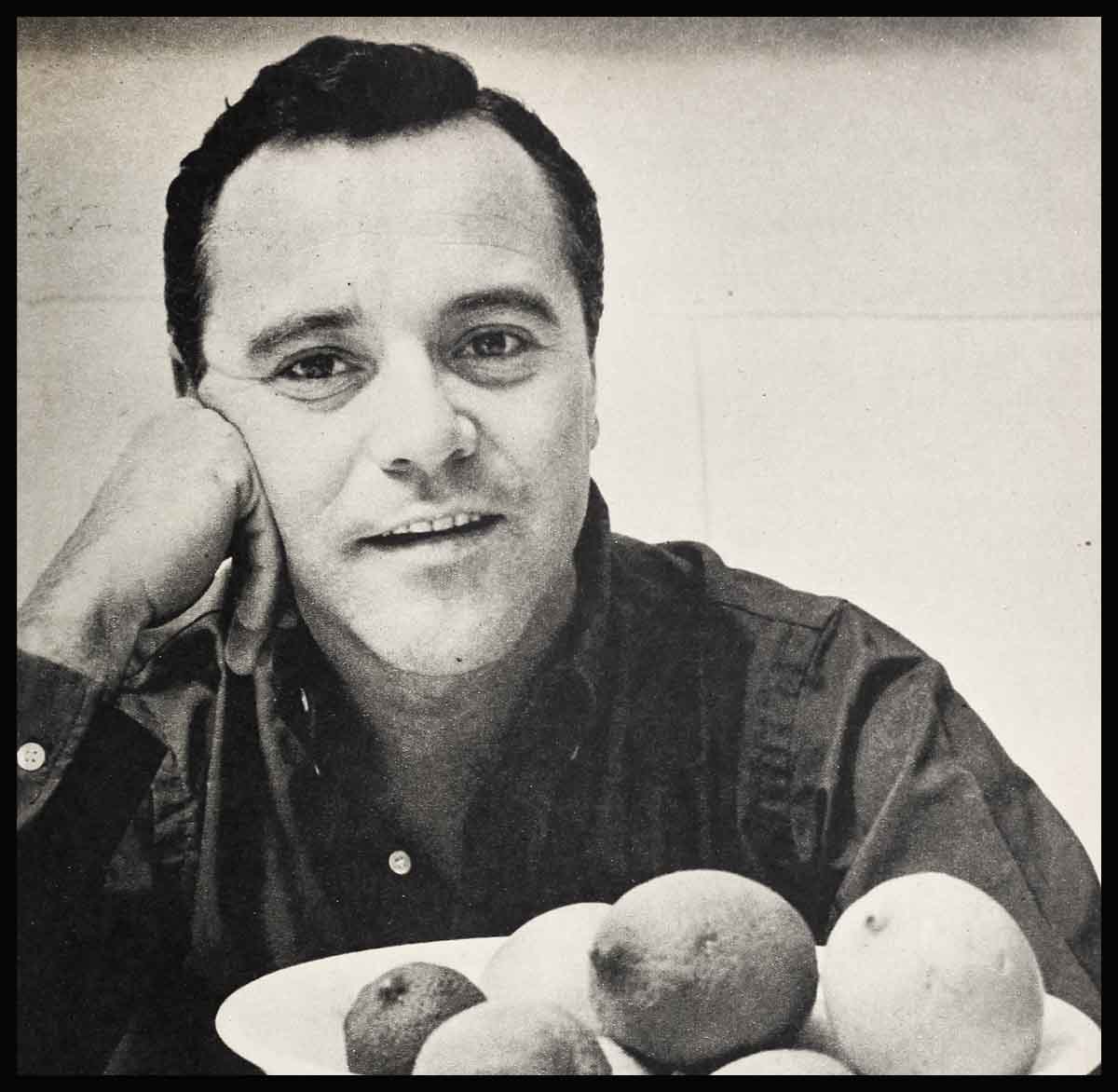

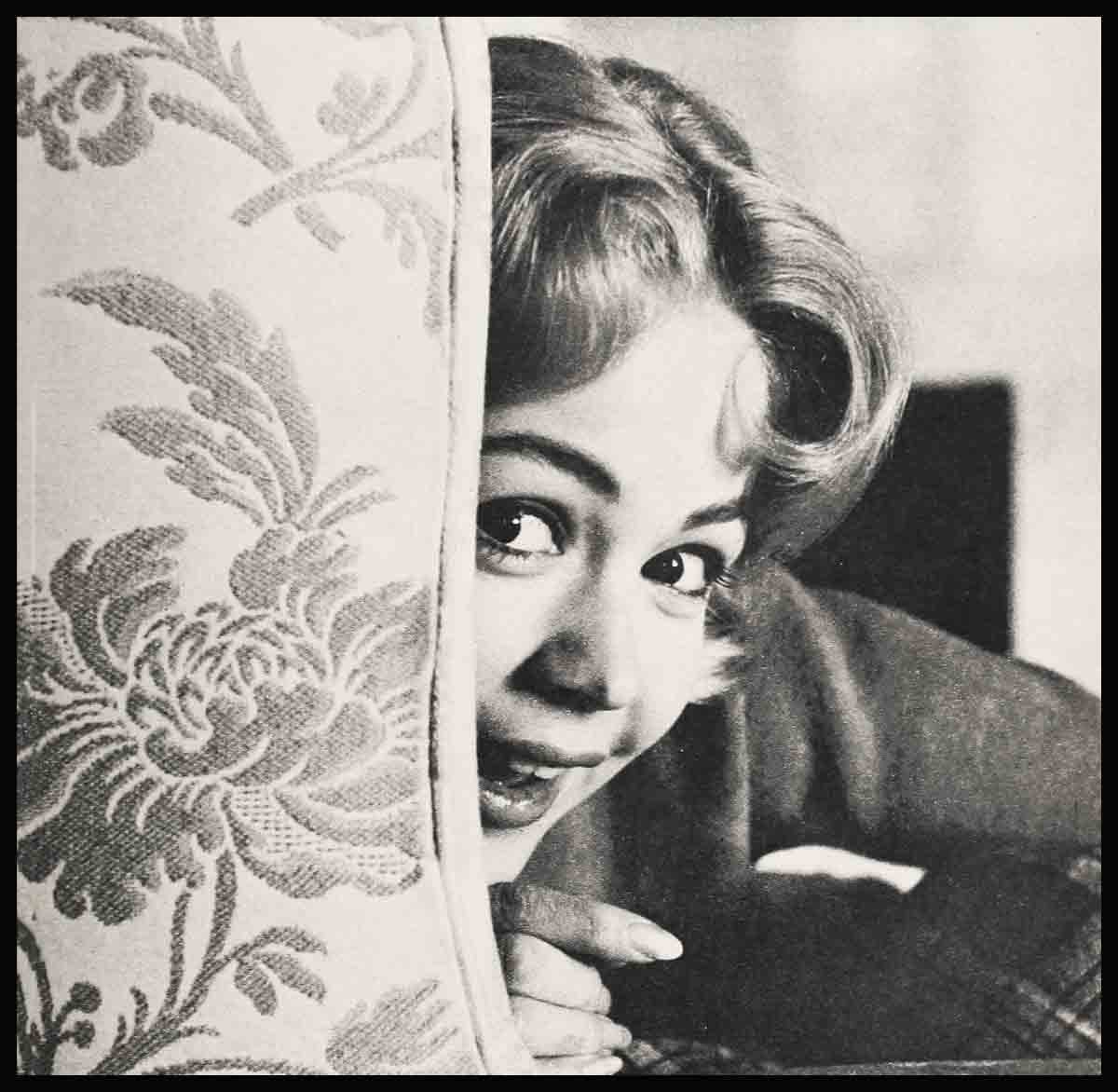
No Comments